What exactly is kissing, and why do we do it? Tony Barrell investigates
THE SUNDAY TIMES (COVER STORY), 1999
Smack in the middle of the rather formal Assembly Room in Lewes Town Hall, Francesca and Paolo are sitting and having a right old snog. There is a fair crowd of people in the room – tourists as well as local Sussex types, braving the hot September Saturday in beards, sandals and socks – and the English thing to do would be to turn away, whistle a merry tune and pretend it wasn’t happening.
Not a bit of it. They are staring intently, pacing slowly around the besotted couple, muttering words like “marvellous” and “enchanting”. Their embrace is so close, it’s impossible to tell if Franny and her lover are using tongues – swapping spit, French-kissing, mingling souls. It’s bad enough that Paolo is her brother-in-law and that they are both completely starkers.
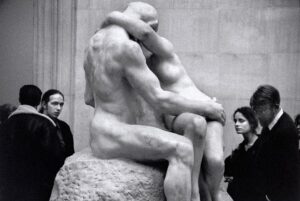
Francesca and Paolo – adulterous lovers straight out of Dante’s Divine Comedy – have been kissing like this for nearly 100 years, ever since their lumpy bodies emerged from a block of marble in the Paris studio of Auguste Rodin. The Kiss, you see, is on loan from London’s Tate Gallery and enjoying a holiday in its home town, the place where it first took up residence in 1904, having been commissioned by the American aesthete and Lewes resident Edward Warren.
A young blond couple in matching white T-shirts and beige shorts are doing a leisurely circuit of the sculpture, hand in hand, and pausing to steal tender little kisses. It all looks perfectly unconscious; they seem unaware that they are copying the antics of the pair on the plinth.
In tantric sex, kissing has a heightened importance, awakening the half-dozen chakras of the body
There’s a lot of it about. The age of chivalry may be long gone, and the scented love letter may have given way to the erotic email. But kissing has survived and thrived in the face of the permissive society, which was supposed to make promiscuous penetration the single currency and render simple acts of affection worthless. What has happened is that we have become more sophisticated, not less, in our loving ways, more appreciative of the oral foreplay iconised by screen lovers like Leigh and Gable and celebrated by jukeboxfuls of pop songs. The last time The Kiss was on display in Lewes, there were cries of outrage and it ended up being covered with a piece of canvas and trundled out of sight. This time, tens of thousands of men, women and children have come to see it, the council has set up the Café Rodin in the neighbouring hall, and outside a sign directs you to the Rodin Car Park.
In tantric sex, that modern fad borrowed from the East, kissing has a heightened importance, awakening the half-dozen chakras, or mystical centres, of the body. “Social kissing” has leaked into the previously starchy world of international business. And in this age of lap-dancing and internet porn, a kiss retains its power to shock and make news. In 1994, Channel 4 was so afraid that Anna Friel and Kerrie Taylor’s lingering lesbian kiss on Brookside would give offence that the scene was cut from the next day’s omnibus edition. The action was condemned in style by the Lesbian Avengers, who staged a kiss-in outside the channel’s HQ, wearing “Kiss Me Quick” hats and carrying placards saying “Don’t Snip the Snog”.
Meanwhile, smooch-ins and kissathons continue to set new records. In a New York session in 1998, Mark and Roberta Griswold outlasted eight other couples, keeping their mouths together for more than 29 hours without so much as a trip to the lavatory, all for the prize of one week’s holiday in Paris. Roberta said later that she had wanted “to show Mark how much I loved him” and that they would do it all over again if they had to. In 1999 the Griswolds’ record was beaten in Rabin Square, Tel Aviv, by Dror Orpaz and Carmit Tzubara, who managed nearly 31 hours before going to hospital complaining of face ache. Which is a bruising reminder that, while it may not be the most romantic expression, “sucking face” sums up the business of human osculation quite well.
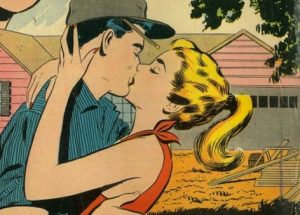
The precision of lip movement is incredible, compared with the movement of our arms and legs
During serious lip action, more than 30 facial muscles go to work. “The precision of lip movement is incredible, compared with, say, the movement of our arms and legs,” says Professor Gus McGrouther, who, as head of plastic reconstructive surgery at University College London, has studied the mechanics of kissing to help him remedy oral deformities. “It’s a very, very fine quality of movement. But when you kiss, you contract most of the muscles in the lips quite strongly. The levator muscles, which are vertical muscles within the lips, lift your upper lip and swing it forward and out. Working against these to shut the lips is the orbicularis oris, a muscle wrapped right round the lips in a circle. When these act together, what happens is the lip pouts forward. And there is a horizontal muscle inside each cheek called the buccinator, which goes more or less from the mouth out towards the ear, and when that contracts it controls the position of the lips. If it’s paralysed on one side, which is what happens in a condition called Bell’s palsy, they swing across to one side. If you pout your lips and put your finger on your cheek, you’ll feel the buccinator working.”
While the lip muscles act as the basic upholstery of a kiss, it’s the mass of nerve endings sited there that keep us coming back for more. The area of the brain that deals with the mouth is actually larger than that concerned with the genitalia. “The lips, mouth and tongue are among the most exquisitely sensitive parts of the body,” says Margaret H Harter of the Kinsey Institute for Research in Sex, Gender and Reproduction, in Indiana. “Five of the 12 cranial nerves that affect brain functions are involved in a kiss. Because of the neural connections from the lips, tongue, cheek and nose to the brain, a kiss permits participants to detect temperature, taste, smell and movement.”
“There are nerves that control the muscle contraction, and a separate set that controls the sensation,” explains Professor McGrouther. “These meet up in the brain. When you’re kissing, you need to have some sensation going back to the brain to tell you where your lips are, so you don’t end up kissing somebody on the end of their nose. The process is all done in the brain, and it takes microseconds; it’s far more clever than any computer.”
If the kissers are consenting adults and the sexual chemistry is good, the effects are not unlike an amphetamine rush
So far, so clinical. But what of the deep-down effects of a passionate kiss? “Lava will run through your veins instead of blood. Your breath will come in short gasps… You will moan in the delicious transports of love… you will go faint because the blood in your veins will be rushing furiously into your entire system and away from the head. Thus, you will be able to think any longer.” That, from a 1936 lovers’ instruction book by Hugh Morris, sounds a touch Mills & Boon (and he alchemically transforms blood into lava and back again within a few sentences), but it isn’t far from the biological truth. Providing the kissers are both consenting adults and the sexual chemistry is good, the effects are not unlike an amphetamine rush. Feelgood dopamine starts rushing round the brain, the testosterone level goes up (in both sexes) and the adrenal glands secrete the hormones adrenaline and noradrenaline, which increase blood pressure and can ratchet the heartbeat from about 60-80 up beyond 100, nourishing the body with extra oxygen. The increase in blood flow shows in the network of vessels beneath the delicate skin of the lips – and swollen red lips are a turn-on (hence the popularity of red lipstick), so we have a kind of lubricious circle here.
During especially passionate kissing, out of the pituitary gland at the base of the brain comes oxytocin, the magic “family” hormone that scientists believe encourages us to form loving relationships, assists in childbirth and stimulates lactation in women. Recent research into oxytocin at the University of California, San Francisco, could lead to proof of what many people, through their own experience, already believe: that kissing somebody creates or increases a desire to have a monogamous relationship with that person. The coup de foudre, that lightning flash of love or infatuation, may not be quite so mysterious after all.
But why do we kiss in the first place? Maybe if kissing could be used as a weapon of war, scientists might have found the answer instead of learning to split the atom and achieve vertical takeoff and landing. One possible explanation is that kissing is just a ruse to get close to someone and sniff them – which is backed up by evidence that we still have a primal need to sample people’s pheromones. Related to this is the theory that we’re just dying to taste the greasy sebum from the glands near their lips, a literal test of sexual chemistry. A less plausible notion is that kisses stem from the days when people licked each other to obtain cooling salt in hot weather.
Chimpanzees are regular kissers, which suggests that kissing could predate mankind
Another explanation, espoused by Desmond Morris in his book Intimate Behaviour, concerns kiss-feeding. “In early human societies, before commercial baby-food was invented, mothers weaned their children by chewing up their food and then passing it into the infantile mouth by lip-to-lip contact,” he writes. “If the young lovers exploring each other’s mouths with their tongues feel the ancient comfort of parental mouth-feeding, this may help them increase their mutual trust and thereby their pair-bonding.”
Other theorists prefer the idea that kissing is a progression from suckling at your mother’s breast. “Although you can’t remember the days when you hungrily popped your mother’s nipple in your mouth, there is a certain amount of sense in this suggestion,” says Nick Fisher, British agony uncle and author of A Complete Guide to Kissing. “Without this type of sucking kiss you’d go hungry and feel unloved. Therefore, as an adult, to continue using your lips as a way of expressing deep affection seems to make some sort of sense. Apart from anything else, on a very deep level it brings back happy memories.”
The Kamasutra, Latin words and South American pottery all reveal kissing to be an ancient activity. And the fact that chimpanzees are regular kissers – and bonobos, formerly known as pygmy chimpanzees, even use probing tongues – suggests it could predate mankind. On the other hand, simian smooching could well have evolved independently long after our evolutionary lines diverged.
Human babies seem born to kiss. They show a high awareness of their mouths as an interface between the internal and external world, continually examining objects by bringing them to their lips. Some seem to be exceptionally early learners: in 1997, a pair of conjoined twins appeared to be kissing at the moment they emerged from the womb in St Mary’s Hospital in Manchester. “Their heads were facing each other at an angle and the two girls were kissing one another,” said the mother, Joan Varley, after the birth. “Their arms and legs were flailing madly as they frantically sucked on each other’s lips.”
While we gain oral expertise as we grow up, we also acquire all those spoilsport adult inhibitions and niceties of etiquette. Children are much more likely to kiss people instinctively, spontaneously and without regard for the consequences. Recently a London hairdresser, Jackie O’Sullivan, was lunching with friends and her three-year-old son, Carter, at a Bournemouth pub. “The waitress brought our food over,” she remembers, “and Carter just started to eat his chips. Then suddenly he jumped off his stool, ran round the table to where the waitress was, grabbed her bottom with both hands and kissed it. I was gobsmacked, and I couldn’t stop staring at him. The waitress took it very well, though.”
For many children, the school playground is the classroom of love, the place where the foundations for amorous activity are laid down. That old favourite among games, kiss chase, is apparently alive and well, and spawning modern variations. Debbie Epstein, a reader in education at the University of London Institute of Education, recently observed pupils at a north London primary school playing their own version of the ITV game show Blind Date. “This was a particular group of three girls, aged about 10, of Turkish Cypriot origin,” she says. “It was a regular game for these girls, and they enlisted a small boy of eight or nine – whichever boy they could find who would play it with them on that day.” The girls would stand behind a wall and number themselves from one to three, and the boy would choose a number – there was none of the ITV palaver of asking questions and giving witty replies. “The game finished with the chosen girl coming out from behind the wall, the boy running away and all three girls chasing after him. When they caught him, which they invariably did, the ‘chosen’ girl would kiss him on the cheek.”
Precocious osculation isn’t always condoned by grown-ups, though. At Cheynes Infant School in Luton in 1999, the head teacher wrote a stern letter to parents when four- to seven-year-old pupils started playing French-kiss chase. The primary concern here was the “exchange of body fluids” and the risk of spreading diseases such as meningitis.
Kissing in public, even without tongues, is a no-no in Malaysia and Papua New Guinea
Growing up doesn’t necessarily give you the keys to the kissing kingdom. Adults indulging in public, even without tongues, is a no-no in some parts of the world, including Malaysia and Papua New Guinea. And it has long been discouraged in puritanical and alarmist circles. “The kiss on the lips, with mucous membrane touching mucous membrane, is frowned upon by most hygienists,” wrote the rather stiff French doctor Joseph Poucel in the mid-1950s, adding that “there is danger in indiscriminate kissing; the Anti-Osculatory League founded in the United States at the beginning of the century was a laudable movement”.
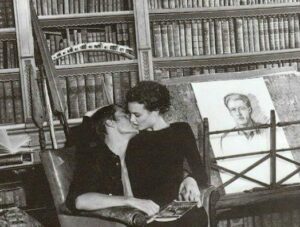
Scientists like Dr Julius Weinberg, consultant epidemiologist at the Public Health Laboratory Service in Colindale, north London, now know this is naive nonsense. “From an evolutionary point of view,” says Weinberg, “if kissing was bad for you, species that kissed would have died out. The majority of the bacteria in our mouths, in our throats, are either beneficial or at least harmless, and it’s probably essential to our survival that we swap bacteria around.” The dangerous minority of bugs include meningitis, he says, “and certainly it would put you at a slightly increased risk if you kissed someone who, within the next day or so, came down with meningitis. But we know that something like up to 20% of the population carry the meningitis bug, and a number of these people will be kissing one another but not transmitting the disease – so it’s much more complex than just kissing.”
Even the risk of catching cold sores is minimal, says Weinberg. “Someone with an active herpes cold sore might transmit that, but most people have been exposed to the virus early in life and are immune.” The common cold, then? And glandular fever, the so-called kissing disease? “Kissing is probably no greater a risk than standing near someone who’s sneezing – because the tiny, tiny droplet that’s carried in the air and is inhaled might be better at infecting you than the direct transfer of saliva, which is swallowed.” And, although the Aids virus has been detected in saliva, the quantities are nowhere near sufficient to pass the disease on, and there have been no recorded cases of such a transmission.
For all Donny Osmond’s 1972 protestations that young people enjoy something racier than “puppy love”, Mormons take a dim view of couples kissing before marriage. “Kissing has been prostituted,” taught the Mormon prophet Spencer W Kimball, “and has degenerated to develop and express lust instead of affection, honour and admiration. To kiss in casual dating is asking for trouble. What do kisses mean when given out like pretzels and robbed of sacredness?” Kimball laid down the law on the types of kisses that were acceptable for young lovers: “I don’t mind your kissing each other after you’ve had several dates, but not the Hollywood kiss, not the kiss of passion, but the kiss of affection, and there won’t be any trouble.”
Anxious businesspeople stumble across the Continent, never sure if they’ve kissed enough cheeks too many times
But it’s the social kiss – the peck of introduction upon meeting a friend of a friend, or the theatrical mwah-mwah adopted by luvvie, fashion and PR types – that causes the real trouble. Anxious businesspeople stumble across the Continent, never sure if they’ve kissed enough cheeks too many times, and men rush to kiss attractive women they’ve just met before realising they’ll now have to kiss the whole room. “Kisses planted on corporate cheeks have caused a potential land mine in corporate America, because one misjudged action can cost corporate points,” says the Texan businesswoman and author Tomima Edmark, who believes two factors have led to the increase in kissy deal-sealing: a blurring of the distinction between social and business manners, and an increase in the number of women in the workplace.
In a 1999 NOP survey of British people, 60% disliked the idea of kissing a new acquaintance, preferring to shake hands with them; only 13% wanted oral contact. “There seems to be confusion about the etiquette of social kissing,” began a recent letter to The Times. “When – and whom – should we kiss on the cheek?… Standardisation of a practice which can cause awkwardness and embarrassment is surely long overdue.”
Whether or not we accept that kissing has been prostituted, there is still the question of whether prostitutes kiss. In the movie Pretty Woman, the hooker played by Julia Roberts is under strict instructions to avoid mouth-to-mouth contact with clients, and the moment the ample-lipped actress starts snogging Richard Gere is the signal that her character has fallen in love. So, are call girls deliberately avoiding the oxytocin road to monogamy?
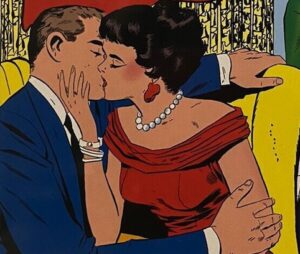
“If you ever listen to prostitutes, the thing that they say they don’t do is kiss; you’re face on face, eye on eye, and it’s a very intimate thing,” said a British sex therapist who insisted I withhold her name. Just as well, because she’s wrong: while many girls definitely won’t, some girls will. An anonymous contributor to The World Sex Guide, an internet “research project about prostitution worldwide”, recalls a £40 experience with “Dominique” in Manchester, who massaged him to orgasm: “Surprisingly, as I finished she gave me a tender, moist kiss on the lips. I had always accepted the myth that prostitutes didn’t kiss.” Another client says of an adventure with “Tara” in Liverpool: “The kiss and cuddle was brilliant. It is my experience that call girls seldom offer French kissing (only six out of 36 so far, and four of them were dogs!).”
A US sex therapist, Martha Stein, found a higher ratio when she carried out a four-year study of over 60 call girls, hiding in bedrooms while they were with clients; over a third of the sessions, it transpired, involved our old friend the tongue.
**************************************************
Under the statue of Eros at London’s Piccadilly Circus, Jo Guest is giving out kisses like pretzels. It’s just after 9am on National Kissing Day, July 6, 1999, and the sometime nude model is helping to publicise Ann Summers, the saucy lingerie and sex-toy chain. Today Jo is mostly wearing two small pieces of black Lycra, decorated with shocking-pink foil lip shapes. Barked instructions issue from a pack of tabloid photographers as she sticks out her bottom and blows kisses, Monroe-style, from the palm of her hand. Look over here, Jo. Do this, do that, Jo. Lovely, Jo. Before he leaves, the photographer from the Daily Star steals a kiss from the model, a perk of the job.
After the shoot, she gives the occasional smacker – “on the lips, but no tongues” – to male passers-by on their way to work. It’s a nice, sunny Tuesday and Piccadilly Circus is as crowded as usual, but she doesn’t seem to be getting many takers. Could the half-smoked packet of Marlboro Lights in her hand be acting as a deterrent? Or is it the fact that the female promoters from Ann Summers keep talking about their “penis lipstick”?
The neck is most British women’s favourite place for mouth contact, according to a survey of 17,000 wives and girlfriends
Jo sticks out her bottom lip and blows air up over her face – the international signal for weariness. “I’ve been up since four this morning,” she sighs, explaining that she has done the rounds of the big London radio stations to promote NKD. At Virgin, she and Chris Evans “had a kiss on the neck” – most British women’s favourite place for mouth contact, according to a survey of 17,000 wives and girlfriends commissioned by Ann Summers. The lips came second, followed by the breasts.
I ask Jo if she remembers the very first romantic kiss of her life. “Yeah,” she says, “It was at school in Heath, near Chesterfield. It was a lad called Duncan. I’d been going out with him probably about four months, and we went to kiss behind a tree. And we banged teeth.”
Like Jo, most people seem to remember the first one. In fact, the details of that epiphanic moment – the location, the sensations, the conversation – often remain sharper and clearer in the memory than those of other life-changing experiences. We know this because the Americans demonstrated it in 1999. Researchers at Butler University, Indianapolis, interviewed nearly 300 people, most of whom recalled their first kiss or the first one in their present relationship with more clarity than other events, including their first all-the-way sexual encounter. The reasons have yet to be fully explored – though brain specialists are already aware of the link between emotion and recollection. For most people this is their first erotic experience, and overwhelming emotions are known to strengthen the synaptic connection that creates a memory.
A man in a suit approaches Eros – at last, a customer! – but asks Jo for an autograph rather than a kiss, helpfully agreeing to hold her cigarettes while she signs her name. But she’s not going to let him get away. “It’s National Kissing Day!” she announces, and her orbicularis oris gets to do its duty again.
Contrary to all appearances at Piccadilly Circus, NKD didn’t begin as a way of selling risqué underwear. It started in 1996 to promote the private dental scheme Denplan, whose “kissing with confidence” campaign linked tooth quality with sexual success, and prompted dentists to start telling us how healthy kissing is. One went as far as to say that snogging is “nature’s own cleaning process. It stimulates saliva flow and brings plaque levels down to normal”.
NKD isn’t the only recent attempt to make money out of osculation. Not long ago, Dallas-based cigar-smoking blonde Tomima Edmark launched her Kissing Machine on the world. Fanfared as “the first kissing accessory ever”, it gives lovers a special tingle when they kiss to background music. The machine consists of two electrical conductors – “love handles” – connected to a device powered by a 9-volt battery, which is crocodile-clipped to the speakers of your stereo. When two lovers complete the circuit by kissing, they get regular low electric charges in time to the music.
The idea for the Kissing Machine sprang from Edmark’s romantic past. “A date of mine several years ago was kind of electronically minded,” she explains, “and we jerry-rigged this gadget together using a miniature train transformer and a couple of spoons, and we really had a great time that evening.”
When I ask Edmark if she has a spare machine I could try out, she gives me the bad news. “Oh, we discontinued it at least a year ago. We took it off the market.” Why? Did someone get a nasty shock? “No, nothing like that. We were featured in Playboy magazine, and unfortunately, Playboy, in their inimitable way, posed the thing with a topless model. We ended up getting a huge percentage of people calling for porno purposes. And I’d ended up selling the latest sex toy, and that was not the original objective. The women who staffed my ordering department were getting really disgusting questions, and a huge group of gay men were ordering it. And I just thought, you know, Yuck City.”
There are no cries of “Yuck City” back in Lewes Town Hall, as people file past a glass case in which two young women are sucking face. Positioned a few yards away from the main exhibit, this is one of Rodin’s earlier and smaller works, a 19th-century, 13-and-a half-inch plaster equivalent of a controversial Brookside snog. A bald man with a grey beard and glasses leans over the lesbians and begins a quiet lecture to his wife. I cock an ear, eager to hear his opinion, and discover that for some reason he is talking about Hannibal crossing the Alps. I suppose it’s the Englishness in him coming out. ♦
© 2014 Tony Barrell
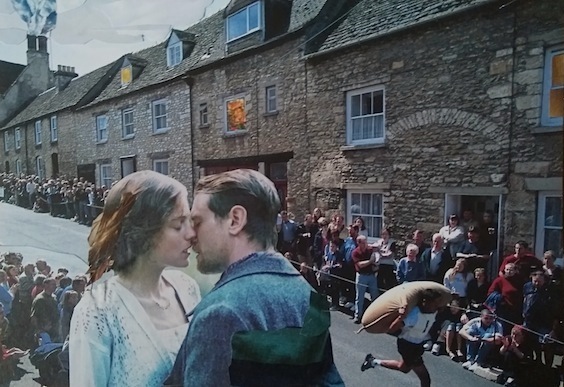
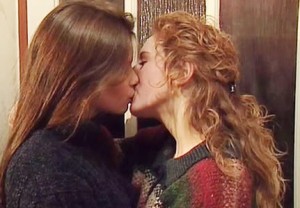
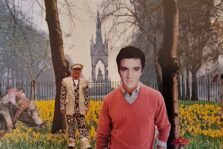
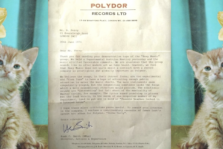
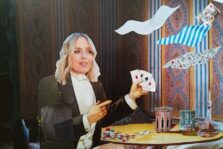


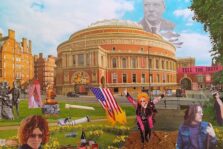


Pingback: COVER STORIES - Tony Barrell